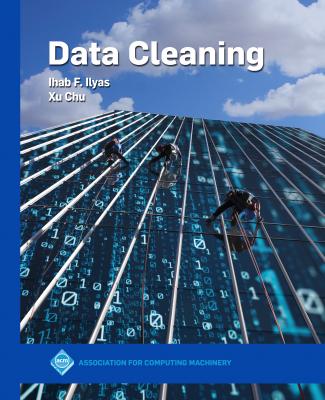Data Cleaning. Ihab F. Ilyas
Чтение книги онлайн.
Читать онлайн книгу Data Cleaning - Ihab F. Ilyas страница 3

2.3 Distance-Based Outlier Detection
2.4 Model-Based Outlier Detection
2.5 Outlier Detection in High-Dimensional Data
3.2 Predicting Duplicate Pairs
3.3 Clustering
3.4 Blocking for Deduplication
3.5 Distributed Data Deduplication
3.6 Record Fusion and Entity Consolidation
3.7 Human-Involved Data Deduplication
3.8 Data Deduplication Tools
3.9 Conclusion
4.1 Syntactic Data Transformations
4.2 Semantic Data Transformations
4.3 ETL Tools
4.4 Conclusion
Chapter 5 Data Quality Rule Definition and Discovery
5.1 Functional Dependencies
5.2 Conditional Functional Dependencies
5.3 Denial Constraints
5.4 Other Types of Constraints
5.5 Conclusion
Chapter 6 Rule-Based Data Cleaning
6.1 Violation Detection
6.2 Error Repair
6.3 Conclusion
Chapter 7 Machine Learning and Probabilistic Data Cleaning
7.1 Machine Learning for Data Deduplication
7.2 Machine Learning for Data Repair
7.3 Data Cleaning for Analytics and Machine Learning
Chapter 8 Conclusion and Future Thoughts
Preface
Data quality is one of the most important problems in data management, since dirty data often leads to inaccurate data analytics results and incorrect business decisions. Poor data across businesses and the U.S. government are reported to cost trillions of dollars a year. Multiple surveys show that dirty data is the most common barrier faced by data scientists. Not surprisingly, developing effective and efficient data cleaning solutions is challenging and is rife with deep theoretical and engineering problems.
Data cleaning is used to refer to all kinds of tasks and activities to detect and repair errors in the data. Rather than focus on a particular data cleaning task, in this book, we give an overview of the end-to-end data cleaning process, describing various error detection and repair methods, and attempt to anchor these proposals with multiple taxonomies and views. Specifically, we cover four of the most common and important data cleaning tasks, namely, outlier detection, data transformation, error repair (including imputing missing values), and data deduplication. Furthermore, due to the increasing popularity and applicability of machine learning techniques, we include a chapter that specifically explores how machine learning techniques are used for data cleaning, and how data cleaning is used to improve machine learning models.
This book is intended to serve as a useful reference for researchers and practitioners who are interested in the area of data quality and data cleaning. It can also be used as a textbook for a graduate course. Although we aim at covering state-of-the-art algorithms and techniques, we recognize that data cleaning is still an active field of research and therefore provide future directions of research whenever appropriate.
Ihab Ilyas
Xu Chu
March 2019
Figure and Table Credits
Figures
Figure 2.6 Charu C. Aggarwal. Outlier Analysis. Springer, 2013.
Figure 3.3 Based On: Jiannan Wang, Guoliang Li, and Jianhua Feng. 2012. Can we beat the prefix filtering?: an adaptive framework